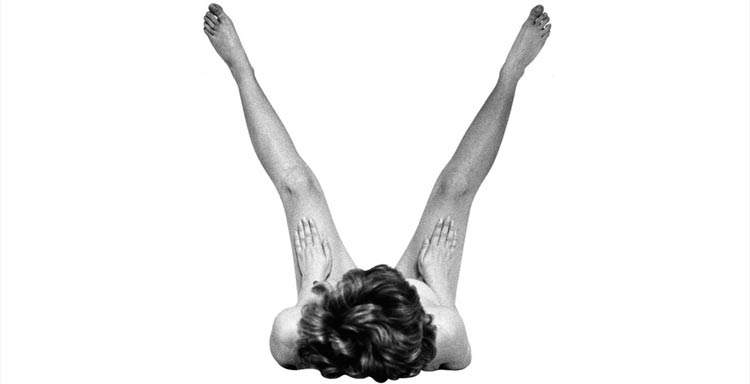Tomaso Binga's Alphabet on display in Florence, inviting women to reclaim language
From Sept. 16 to Nov. 11, 2022, Galleria Frittelli in Florence will host the exhibition Parole abitate, a solo show by Tomaso Binga (Bianca Pucciarelli Menna; Salerno, 1931), the artist, poet and performer who uses the provocative pseudonym as a man with the aim of laying bare male privilege even in the field of art. The exhibition presents for the first time works belonging to the recent seriesAlphabet Poetic Monumental, Alpha Symbol, ArteNatura, alongside a selection of works from the 1970s, including the polystyrene sculptures Piedi (1973) and Congiunte separate (1973), the photo-performance A me (1976-1977) or the alphabet Esse sono (1976).
The centerpiece of the exhibition, curated by Raffaella Perna, is themonumental Poetic Alphabet (2019), in very close relationship with the previous series of thewall alphabet (1976) that Tomaso Binga had made in the Tuscan capital, with the help of his friend, artist and photographer Verita Monselles. To obtain the 26 images immortalizing Tomaso Binga as her body was molded into the shape of the letters of the alphabet took her a great deal of work, and for months the artist frequented Verita Monselles’ Florentine studio where she tried and tried again every pose to arrive at this work that today is among the best known of the feminist art season of the 1970s.
The exhibition aims to initiate a dialogue between yesterday and today from which the themes dear to the artist emerge: the power of language, the expressiveness of the body, theidentity of women, and the role of individual and collective historical memory. A reflection that is translated into words and phrases consisting of letters modeled with Tomaso Binga’s body, reproduced at his natural height of 160 centimeters.
The grandeur of these new “sign-sculptures” is intended to counterbalance the fragility of the material chosen as a support, polystyrene, which Tomaso Binga has been using since 1971 for its dual value as a ductile substance and a technological element typical of packaging produced by advanced capitalist societies. The artist redeems this waste material by shaping it according to a corporeity experienced and exhibited with irony to give space to “the imperfect, the error, the out-of-place.”
Tied to ideas developed by the feminist movements of the 1970s, Binga’sMonumental Poetic Alphabet celebrates the power of women to reclaim language, identity and body, to think of themselves and represent themselves as active subjects of history, proposing an alternative idea of monument, a genre traditionally conceived to celebrate values such as strength, heroism, courage, and patriotism, symbolically associated with the male. “We no longer want to feel like abstract entities, but physically, socially, politically human persons,” Binga says.
The 1978 work Dattilocodice (now on display at the Venice Biennale), on the other hand, is at the origin of the new Alpha Symbol and the ArteNatura cycle, where letters and graphic signs compose optical-visual tables, closely reminiscent of the modular experiments of kinetic art and Optical Art, but retaining a stringent link with the linguistic universe to which they belong and exploring the iconic character of writing, placing emphasis on the visual qualities of the word, which becomes first and foremost an image.
The exhibition is carried out in continuity with the program to promote Italian women artists and photographers launched in 2015 by the Frittelli arte contemporanea gallery with the exhibition Altra misura. Art, Photography and Feminism in Italy in the 1970s, also curated by Raffaella Perna, which also sees her active in supporting exhibitions in public and private museums and foundations that promote the art of Italian women artists.
For the occasion, the Frittelli arte contemporanea gallery and the Silvana Editoriale publishing house will present the book Tomaso Binga. Inhabited Words, which includes a new essay by curator Raffaella Perna and an extensive critical anthology.
 |
| Tomaso Binga's Alphabet on display in Florence, inviting women to reclaim language |
Warning: the translation into English of the original Italian article was created using automatic tools. We undertake to review all articles, but we do not guarantee the total absence of inaccuracies in the translation due to the program. You can find the original by clicking on the ITA button. If you find any mistake,please contact us.




























